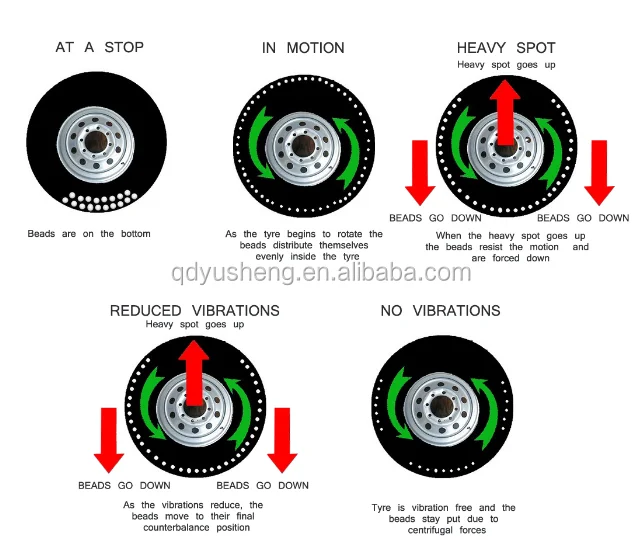Tire rotation is a vital maintenance service that should be performed regularly—though it’s easy to forget. If you haven’t had a tire rotation recently, you may be wondering how much it’ll cost.
Tire rotations aren’t usually expensive. Yet they can save you thousands on premature tire replacements and undue suspension repairs. And usually, it’ll be done within an hour. So how much does such a vital service cost?
So, how much does it cost to get a tire rotation? The average price of a tire rotation costs between $35 for a basic job to $100+ for an extensive service on a tricky vehicle. Most customers walk out the door spending less than $100, including taxes, and spend an average of 40 minutes waiting for the job to be finished.
A tire rotation is one of the least pricey and most important regular services for your car. However, most tire rotations aren’t just a rotation, and several factors can increase the cost. If you opt for tire balancing and an alignment, the cost can quickly jump to $150, especially if your car is overdue for either.
We sourced the information in this article from careful research and industry pricing trends. We also drew off our professional experience working in the wheel and tire industry.
Before we get into tire rotation pricing, let’s cover what the service really means and why it’s so important. A tire rotation simply rotates the tires around the car. In many cases, this is a simple task—but depending on the type of car, it may be more complex and labor-intensive.
Roads are imperfect, and mechanical stress on various parts of a car differs widely. For example, the weight of the engine over the front wheels can cause the tires to wear faster than the back wheels—though a rear-wheel-drive vehicle may wear the rear tires faster.
Another comparison between the front and back wheels has to do with steering. A back tire may never use the outer bands of the tread, as the wheels are laterally fixed. However, the variations caused by steering the front wheels may wear the outer tread more significantly.
A back tire may never use the outer bands of the tread, as the wheels are laterally fixed. However, the variations caused by steering the front wheels may wear the outer tread more significantly.
A tire rotation moves the tires around, allowing them to wear down more evenly as they’re exposed to the same stresses over the life of the tire. Without a tire rotation, you’ll get unevenly-worn tires that will need to be replaced sooner, even though some areas have very little wear.
The tire rotation process itself depends largely on the type of vehicle, wheel sizes, and tire types.
In the past, a tire rotation was performed by simply unbolting each wheel and ‘rotating’ it one forward or one back. By the end of this process, each wheel will have advanced one single position. Another common procedure for traditional rear-wheel-drive vehicles was to simply swap the front and rear tires.
However, modern cars with varied drive lines have a different procedure.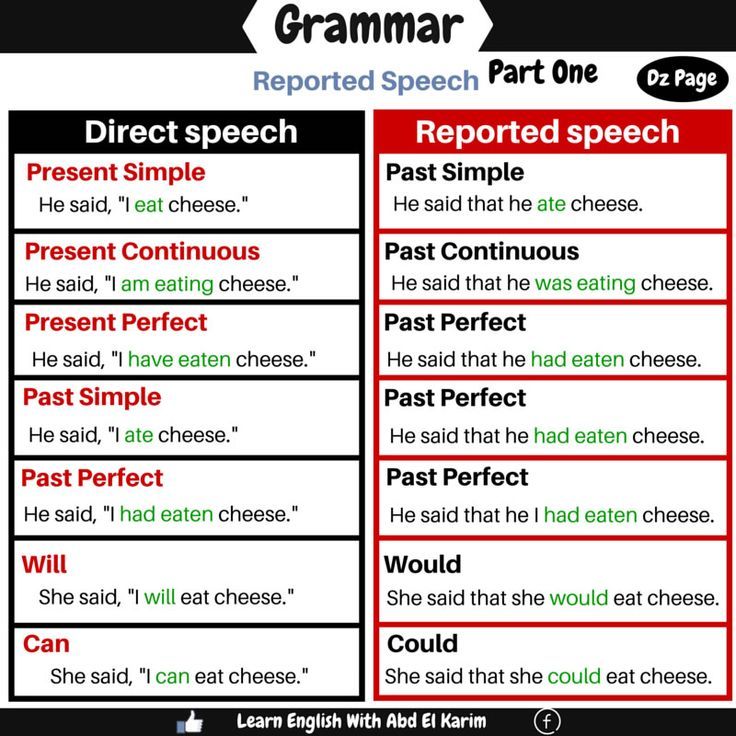 The process is further complicated if the wheels on the front are a different size than they are on the rear, which is common in luxury and performance cars made by companies such as BMW.
The process is further complicated if the wheels on the front are a different size than they are on the rear, which is common in luxury and performance cars made by companies such as BMW.
For most typical cars and light trucks, a tire rotation is one of the least expensive services you can receive. The lowest cost of a tire rotation hovers around $35 to $50, and it’s usually done in less than an hour.
However, luxury cars and larger vehicles tend to be more expensive to service, and tire rotation may be effectively impossible. These vehicles cost upwards of $200 for a tire rotation, and they may require total tire replacement in about half the mileage of a standard car with equally-sized wheels and tires.
Often, people opt to have their tires balanced and (perhaps) receive an alignment as well, which can cost at least $20 to $30 extra. Despite the increased cost, this procedure is usually necessary as wheels should be balanced at regular intervals—especially as tires wear down.
The vast majority of cars sold today are front-wheel-drive, or FWD. This means that the engine (which is usually horizontally-oriented) sends the power to the front wheels, which also do the steering. As you can imagine, this causes the front tires to wear out faster than the rear tires.
In a standard FWD car, like a Honda Civic or a Toyota Corolla, a technician will typically rotate the front and rear tires in an “X” pattern. The rear passenger wheel and tire go to the front driver’s side, and the rear driver’s side wheel and tire go to the front passenger side.
Basic front-wheel-drive cars are usually the least expensive to service, as the tires hardly ever need to be removed from the wheels. The average cost of a front-wheel-drive tire rotation is between $40 and $70, and the job time is less than an hour.
Rear-wheel-drive (or RWD) vehicles were once the standard configuration for cars and trucks. This began to change in the 1980s, as the advantages of FWD for commuter cars made them a preferable option. Still, the procedure for rotating RWD tires is virtually identical to FWD cars, and the cost remains the same.
This began to change in the 1980s, as the advantages of FWD for commuter cars made them a preferable option. Still, the procedure for rotating RWD tires is virtually identical to FWD cars, and the cost remains the same.
The cost to rotate a typical RWD vehicle’s tires is between $30 and $80. It can cost more due to the generally increased size of the tires on older vehicles. Today, most RWD vehicles are pickup trucks or performance vehicles, which have their own sets of challenges that we’ll cover later.
All-wheel-drive (or AWD) vehicles are known for wearing out tires fast. It’s especially important to have your tires rotated regularly if you have an AWD vehicle due to the increased wear speed and the widely varied power loads.
Most AWD vehicles distribute more power to the front wheels. But since the rear wheels also get power, the tires are worn out extra fast (but faster in the front). This complicates the process. Additionally, skipping tire rotations may cause your tires to wear out beyond the point of rotation—in which case you’ll need a whole new set prematurely.
Additionally, skipping tire rotations may cause your tires to wear out beyond the point of rotation—in which case you’ll need a whole new set prematurely.
AWD tires should not be rotated front-to-back or in a circle. Most shop techs agree (as do most manufacturers) that AWD tires should be rotated in an “X” pattern. This has become the standard procedure for most vehicles today.
The cost of an AWD tire rotation will be about the same as a standard RWD or FWD car, provided that the wear isn’t too uneven. These tires will likely require balancing at each rotation, which can increase the cost up to 50%. A safe estimate is $80 to $100 at most tire shops for an AWD tire rotation.
Many people incorrectly assume that AWD and 4WD systems are the same. In most cases, they’re not—and a 4WD vehicle likely costs less to service than an AWD car. 4WD (also known as 4x4) is usually designed to run part-time only. This means that, on pavement, the vehicle almost exclusively uses the rear wheels for power unless the operator manually switches into 4WD.
4WD is not designed for dry pavement. In fact, using 4WD on asphalt can seriously damage the entire system—including the tires. Most expensive tire rotations are the result of improper 4WD use over an extended period of time.
If a 4WD system is operated and maintained correctly, the cost (and procedure) to rotate tires is usually the same as a 2WD system and rarely costs more than $100.
Electric vehicles are relatively new to the market. Yet they’ve quickly garnered a notorious reputation for burning through tires, and thus, needing more frequent tire rotations.
This is because electric vehicles apply 100% of their torque immediately, which is a massive strain on tires. A conventional car has a powerband and doesn’t reach peak performance until well after the tires begin to move. Electric vehicles are always at peak performance, which causes progressive tire wear.
Electric vehicle tires should be rotated every 3,000 miles for long life.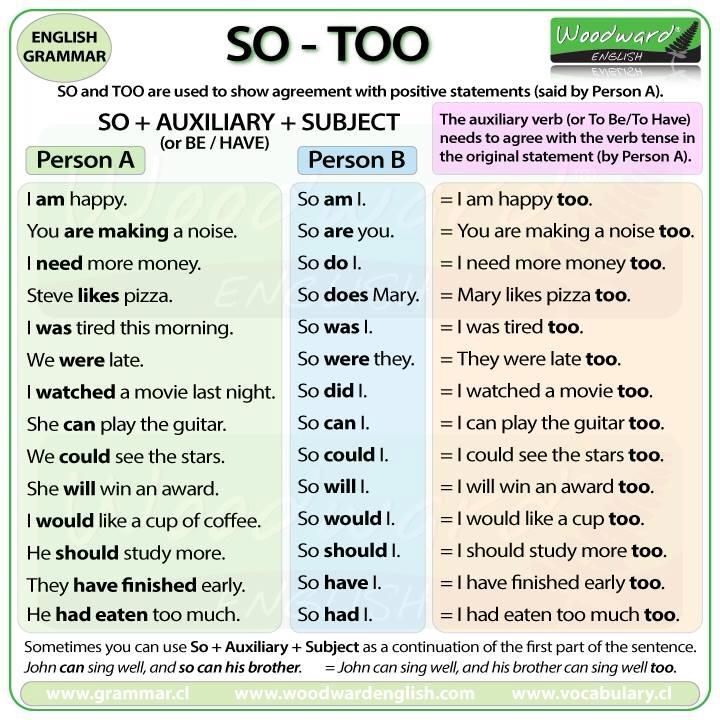 The procedure itself usually costs about $80 to $100 and must occur more frequently than conventional vehicles.
The procedure itself usually costs about $80 to $100 and must occur more frequently than conventional vehicles.
The type of tire you have can increase the cost of a tire rotation. For example, large off-road tires (when used primarily on pavement) can wear down unevenly—and quite rapidly too.
Shop techs don’t like lifting massive wheels and tires, and balancing them requires more time and materials. These factors can increase the price of tire rotations for big trucks and SUVs.
Today, it’s increasingly common for new vehicles to use larger wheels and tires in the rear. This is for traction and stability and may even increase fuel economy. However, it poses a problem for shop techs: cars with different tires in the back can’t receive a full rotation.
The cost of the rotation and balancing will be about the same and range from $40 to $100. However, techs will only be able to rotate the tires side-to-side and not back-to-front.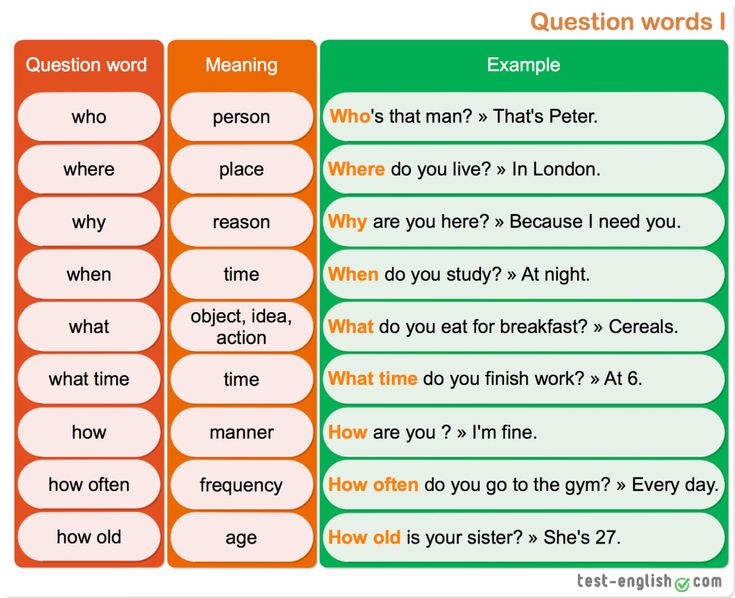 Over time, this will decrease the life of the tires by up to 30% or more.
Over time, this will decrease the life of the tires by up to 30% or more.
Yes, you can rotate your own tires virtually for free—but you won’t get the added benefit of tire balancing. As tires wear down, the need for counterweights increases. An unbalanced tire can cause dramatic vibrations on the highway and even throw off your alignment.
All you need to rotate tires is a jack and a tire iron. These items cost no more than $75 total, and they can be reused indefinitely. For the lowest-priced full tire service, simply remove all four wheels and take them to a tire shop for balancing prior to rotation. Be sure to leave the car on blocks or jack stands.
Car maintenance is an essential aspect of owning a vehicle. Tire rotations are one of them, which you can get at all Discount Tire stores.
So, how much is a tire rotation at Discount Tire?
Tire rotations at Discount Tire costs around $15. Also, if you need a Discount Tire wheel balance or tire rotation for the tires bought from them, it’s free.
Also, if you need a Discount Tire wheel balance or tire rotation for the tires bought from them, it’s free.
Go to any Discount Tire stores, and you’re all set and ready. So, now you know the service price for a tire rotation at Discount Tire.
Table of Contents
In most stores, the tire rotation service fee is about $24-$50. Some auto shops might even charge you upwards of $120. You usually pay with how much additional services you’re getting.
You’ll get a slightly lower price at $15 per tire in a Discount Tire shop. However, if you purchase your tires there, you’ll get free rotations for the tires.
Promos like these are usually the case as well in other auto-shops. But, the $15 price at Discount Tires is still substantially better than the more expensive price points.
But, the $15 price at Discount Tires is still substantially better than the more expensive price points.
You also have the option of using a coupon when you want to get lower prices on other services. So, save those coupons and get more services at a budget-friendly price.
What’s better than a cheap tire rotation? A free one! Through various Discount Tire services, you’ll get them at no additional charge.
If you bought your tires or wheels at Discount Tire, they’d offer you a free tire rotation or balance. Even buying new wheels should cost less.
Just bring your vehicle there and follow some instructions, and you’re good to go. Don’t forget to bring your receipt for some extra proof that you bought your tires at Discount Tire.
Yes, But before rotating those tires at home, you should know whether your tires are classified as directional or non-directional tires.
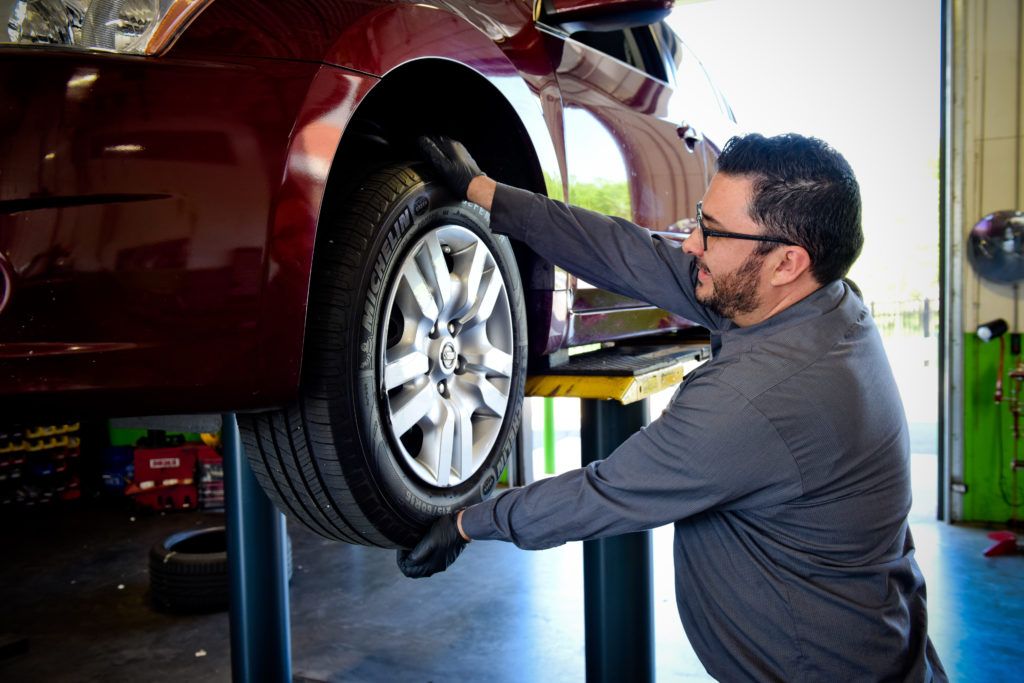 Each one is tailored specifically to the left or right side of the car.
Each one is tailored specifically to the left or right side of the car.Switching your front tires with your rear tires and vice versa is the way to rotate directional tires. The tires you exchange must be on the same side.
Instead of rotating a directional tire with the same side pattern, you should employ a criss-cross pattern when rotating a non-directional tire.
Tools needed:
Step 1: To maintain safety throughout the procedure, make sure that you apply the parking brake.
Step 2: On your wheels, remove all of the lug nuts. Doing this makes removal simpler when your car is raised,
Step 3: With a jack, elevate your car and use jack stands or blocks to maintain its raised position. Then, repeat on the other sides and rotate according to a tire’s directional or non-directional characteristic.
Then, repeat on the other sides and rotate according to a tire’s directional or non-directional characteristic.
Some people use four jacks to lift their car off the ground completely, but I don’t recommend this because it can lead to accidents.
Step 4: Upon completion. Slowly descend your car while ensuring that all the lug nuts are secured as tightly as possible. You’re done at that point!
When should I opt for a tire rotation in Discount Tire?
Discount Tire recommends always opting for a Discount tire free rotation every 6,000-8,000 miles. Doing this ensures that your wheels are in excellent shape and wear evenly.
While you’re there, consider also balancing your wheels or checking your tire pressure so you’ll get the most out of your tire maintenance needs.
However, the best way is to still check your owner’s manual for more accurate information.
Can I do tire rotations by myself?
The short answer is yes.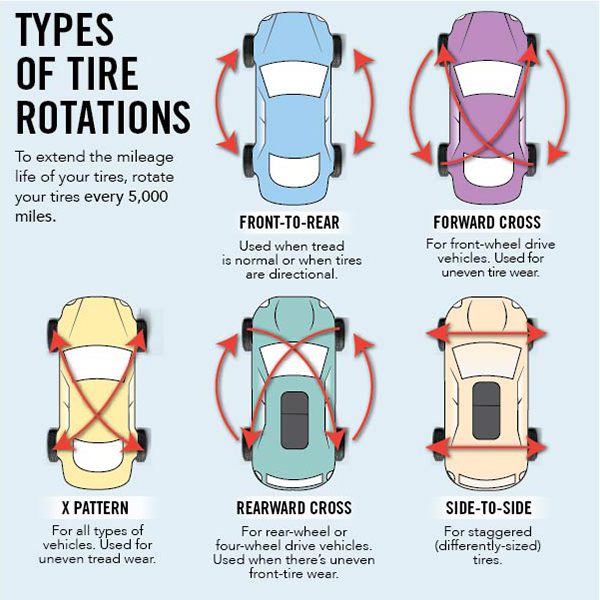 Tire rotations can be an essential part of personal car maintenance. Not only would this save you money, but it can expand your knowledge on how to take care of your car correctly.
Tire rotations can be an essential part of personal car maintenance. Not only would this save you money, but it can expand your knowledge on how to take care of your car correctly.
How long does a tire rotation take?
Tire rotations won’t take much from your day. Typical tire rotations without complications should only take about an hour at auto shops. However, if you do tire rotations by yourself, it could take a bit longer than usual, depending on your car maintenance skills.
How long can you go without a tire rotation?
Most tire manufacturers recommend rotating your tire every six months or every 7,500 miles of distance. Doing this ensures your tires are in optimal shape, so performance is not compromised.
What happens if I don’t rotate my tires?
Typically, tires can last 60,000 miles of travel, provided they are well maintained and away from hazards like sharp objects or rough roads.
If you neglect tire rotations from your service maintenance, the uneven wear and tear could cause your tires to lose 17% of their life, roughly 10,000 miles.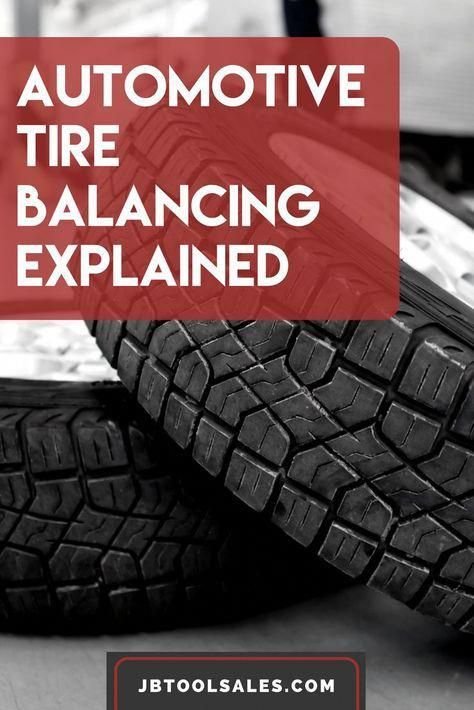
Worn tires can also pose a danger when driving. The lack of traction can severely affect your handling, especially on wet surfaces. Drive safer, and don’t forget to rotate your tires.
To sum it up, tire rotations are a cheap and highly effective car maintenance method. Moreover, there isn’t a downside to doing them; the most you can lose is an hour of your time.
Tire rotations stretch the life of your tires and make for safer driving conditions on the road. So take an hour or two out of your weekend to do them yourself. Or, make a trip to Discount Tire for a pro to do it for you.
Either way, you can’t lose with tire rotations. I hope this article has shed some light on the itching question, “how much is a tire rotation at Discount Tire?”
LADA
UAZ
KIA
Hyundai
Renault
Toyota
Volkswagen
Skoda
BMC
BMAN
BMARS
BMAN
Mitsubishi
Mazda
Ford
All brands
Related materials
Seasonal tire change: everything car owners need to know
To begin with, a small educational program.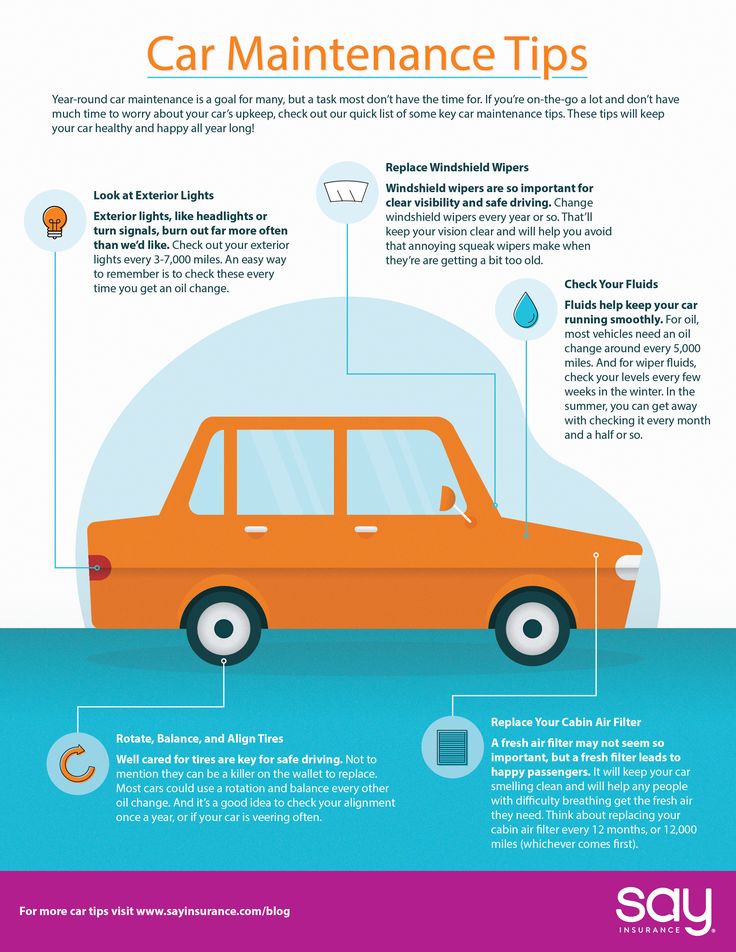 Balancing is the alignment of the center of mass of the wheel with the axis of rotation. In this case, the loads are fixed opposite the heavy part of the wheel. This is the definition of static balancing. And since the wheel is not a thin disk, but rather a wide roller, the so-called dynamic balancing is necessary, when loads are placed both on the outer and on the inner parts of the wheel disk. Naturally, the wheels need to be balanced immediately after mounting the tire on the rim: after all, the imbalance can reach 50–60 g on each side. If it turns out more, then it makes sense to "twist" the tire relative to the disk, ensuring their mutual rotation by 180 degrees. With this initial balancing, tire workers provide an imbalance of less than 5 g per side. It is believed that a new tire is capable of slightly changing its position on the disk in the first kilometers, and therefore the balancing will go away a little.
Balancing is the alignment of the center of mass of the wheel with the axis of rotation. In this case, the loads are fixed opposite the heavy part of the wheel. This is the definition of static balancing. And since the wheel is not a thin disk, but rather a wide roller, the so-called dynamic balancing is necessary, when loads are placed both on the outer and on the inner parts of the wheel disk. Naturally, the wheels need to be balanced immediately after mounting the tire on the rim: after all, the imbalance can reach 50–60 g on each side. If it turns out more, then it makes sense to "twist" the tire relative to the disk, ensuring their mutual rotation by 180 degrees. With this initial balancing, tire workers provide an imbalance of less than 5 g per side. It is believed that a new tire is capable of slightly changing its position on the disk in the first kilometers, and therefore the balancing will go away a little.
Now let's turn directly to our topic. If you alternately install either winter or summer tires on the same wheels, then you cannot avoid balancing.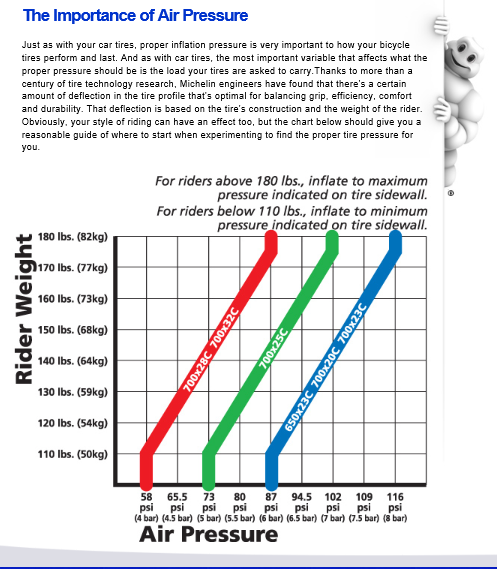 There is nothing to argue about here. The question of balancing every season arises only for those car owners who have two complete sets of wheels: summer and winter.
There is nothing to argue about here. The question of balancing every season arises only for those car owners who have two complete sets of wheels: summer and winter.
Related materials
Routine work that everyone ignores (and in vain!)
So, should the wheels be balanced at every seasonal change?
If you approach the process formally, then you should remember the instructions for the car. It is usually recommended to balance the wheels after a run of 10,000 to 15,000 km. If you drive less in one season, then you definitely shouldn’t balance, except for the cases specified below.
But this is in theory, but in practice I advise you to monitor the behavior of the car. If there is no noticeable beating of the steering wheel, then balancing is not needed. The beating of the rear wheels is felt less, but they usually suffer less often. In any case, you should feel a strong imbalance.
If you change your own wheels twice a year, the following recommendation applies. Put the wheels on and ride for a couple of days. During this time, the tire will get rid of the deformations that occurred during storage. If there are no vibrations at any speed with which you drive, balancing can not be carried out.
Put the wheels on and ride for a couple of days. During this time, the tire will get rid of the deformations that occurred during storage. If there are no vibrations at any speed with which you drive, balancing can not be carried out.
Related materials
10 procedures without which it is better not to drive
Balancing is required in the following cases:
Photo: depositphotos.com
Our new video
Test of the most modern in the history of the Volga GAZ-3111
Anti-crisis UAZ Patriot: the pros and cons of "simplified"
3 good reasons to buy the old Vesta instead of the new Grants
Do you like the note? Subscribe and you will always be in the know!
Driving in Zen
 At what temperature should tires be changed? After all, tires affect not only road grip, but also comfort, handling and even driving style, shaping the summer and winter driving style. Let's figure out when you need to change tires, and how to do it right.
At what temperature should tires be changed? After all, tires affect not only road grip, but also comfort, handling and even driving style, shaping the summer and winter driving style. Let's figure out when you need to change tires, and how to do it right. The best time to change tires seasonally varies from year to year due to quirks of the weather. And this is normal even for one city - what can we say about different regions, where ideas about winter and summer can differ significantly. Therefore, legislative initiatives on forced seasonal “changing of shoes” of cars in strictly defined months look rather strange: nature will still make adjustments.
Here, an analogy with public utilities is appropriate, who start and end the heating season not according to the calendar, but when a certain average daily air temperature is reached - that is, based on the objective readings of the thermometer. The same approach should be followed by motorists when choosing the time to change tires.
At what temperature should tires be changed? Manufacturers believe that +7 degrees Celsius is the optimal moment for seasonal “changing shoes”. At this point, the graphs of grip levels for winter and summer tires converge: at temperatures above +7°C, winter tires work inefficiently and wear out quickly. And at lower temperatures, the performance of already summer tires drops.
But this graph reflects the properties of some average tires. In reality, the composition of the rubber compound for different tires is significantly different. The same winter tires can be both soft "Scandinavian" (hardness 50-55 Shore units), and "Central European", with a hardness of 60-65 units. Obviously, their indicators are very different: the first ones will “float” even with a small plus, the second ones will work tolerably even at +10°C.
Read more: Which tires are best? Scandinavian, European, studded
The choice of temperature is also somewhat arbitrary. In a sharply continental climate, it can be +7 during the day, and -3 at night, and in the morning you will be met by a dangerous ice film on the road. Therefore, it is better to be guided by logic: switch to summer tires when there is no chance of encountering ice on the road. That is, if during the day the thermometer does not go into minus, and the long-term weather forecast does not promise a cold snap. And vice versa, put winter tires before the onset of "near zero" temperatures and the first frosts that threaten to turn puddles into ice.
In a sharply continental climate, it can be +7 during the day, and -3 at night, and in the morning you will be met by a dangerous ice film on the road. Therefore, it is better to be guided by logic: switch to summer tires when there is no chance of encountering ice on the road. That is, if during the day the thermometer does not go into minus, and the long-term weather forecast does not promise a cold snap. And vice versa, put winter tires before the onset of "near zero" temperatures and the first frosts that threaten to turn puddles into ice.
But still, it is the temperature, and not the presence of precipitation, that is the key signal to change tires. For example, at -5°C, summer tires are ineffective even on absolutely dry pavement. And when the temperature rises from +4 to +11°C (just in the region of "transitional" +7°C), the braking distance on winter tires increases by half a meter at once. With a further increase in temperature, winter tires are losing on braking to summer tires for several car bodies. Therefore, driving on winter tires in summer is very fraught.
Therefore, driving on winter tires in summer is very fraught.
Read more: To inform or change shoes? Do I need to change winter tires for summer tires in summer
If you have bought a new set of tires, you can immediately start installing it. But old tires that have been waiting in the wings for six months require certain checks.
First of all, make sure the tires are still serviceable. According to the Rules of the Road, the minimum allowable tread depth for passenger car tires is 1.6 mm (summer tires) and 4 mm (winter tires). With a smaller balance, you can no longer ride on tires.
You can measure the remaining tread with a special tool - a caliper. There are also special wheel tread depth gauges, including digital ones.
Another important traffic law requirement for tires: they must be the same (at least on each of the axles). Modern cars equipped with a lot of smart electronics - ABS, directional stability and braking force increase systems - are even sensitive to uneven tire wear, not to mention different sizes or tread patterns. But the dangerous experiments of drivers with the so-called mixed fleet (sets assembled from different tire models) are already a thing of the past.
But the dangerous experiments of drivers with the so-called mixed fleet (sets assembled from different tire models) are already a thing of the past.
Also, before installation, you need to visually assess the condition of the tires. When stored for a long time, especially in unsuitable conditions (for example, at high humidity, which is not uncommon in private garages), the rubber may deform, crack or dry out. It is impossible to install tires with such defects: at high speed, any crack in the rubber becomes extremely dangerous and threatens to explode the tire.
By the way, for seasonal storage of tires, you can use the “tire hotel Hyperauto”, where the correct temperature and humidity are constantly maintained. Hyperauto specialists bear full financial responsibility for the tires, and on the day you have appointed, they themselves bring the wheels for tire fitting, which is very convenient.
In addition to the tread depth and the absence of external defects, before installing the tires, you need to check their uniform wear (the tire should not be “eaten” from one side), as well as age.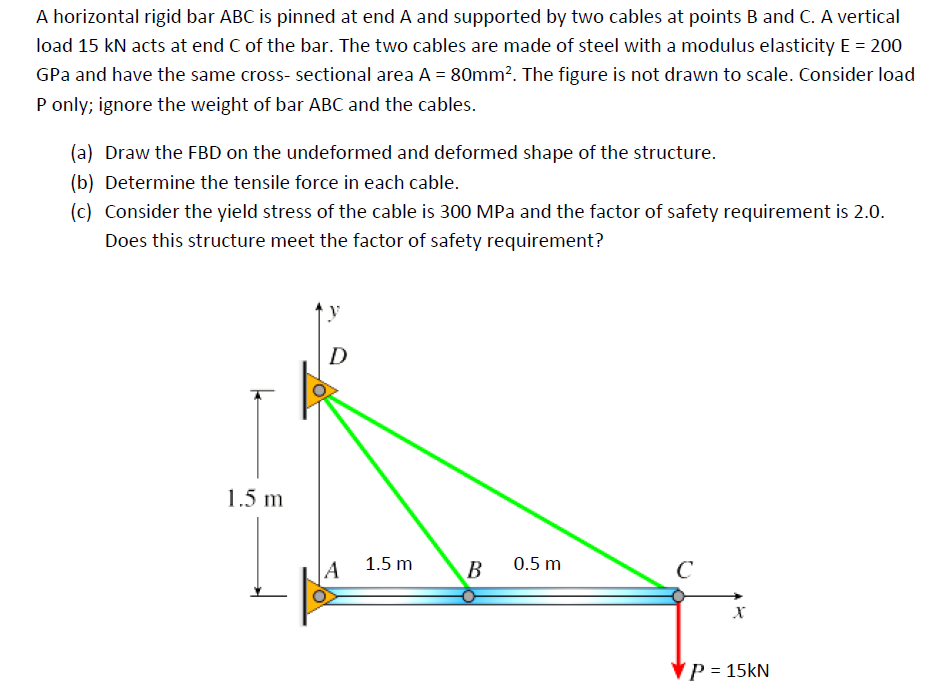 Natural rubber, from which rubber is made, retains its properties for 5 years from the date of manufacture of the tire. The aging of rubber greatly affects the effectiveness of traction, so it’s not worth driving on old, even if not worn, tires.
Natural rubber, from which rubber is made, retains its properties for 5 years from the date of manufacture of the tire. The aging of rubber greatly affects the effectiveness of traction, so it’s not worth driving on old, even if not worn, tires.
When changing tires, do not forget about their periodic rotation - rearrangement, the scheme of which can be found in the instructions for the car. Rearranging the wheels ensures uniform wear, which prolongs the life of the entire set. Standard tire rotation schemes are presented below, but it is better to check the instructions for your particular machine. It is recommended to change tires every 10,000 km.
On rear- and all-wheel drive vehicles, the front tires are moved to the rear axle diagonally (diagram A), or they are changed in a cross pattern (B). On machines with front-wheel drive, the situation is reversed: the rear tires are moved diagonally forward (Diagram C).
Tires with a directional tread pattern cannot be turned without overbeading.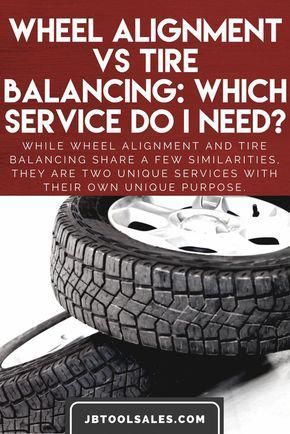 To rotate them without removing them from the disks, the front wheels are simply swapped with the rear wheels on each side of the car (Diagram D).
To rotate them without removing them from the disks, the front wheels are simply swapped with the rear wheels on each side of the car (Diagram D).
If the car is equipped with a full-size spare tire, not a spare tire, and you bought a set of five new tires, be sure to include the "spare" in the rotation (diagrams E and F), changing the wheels every 10,000 km. This will allow you to use the kit longer and easily replace any of the main ones with a spare wheel in case of damage - their wear will be the same. Thanks to this scheme, buying five tires in the end turns out to be more profitable than four, due to longer operation.
To maintain rotation, mark old tires with a colored marker before they are removed from the machine; if you forget about it, then it will be difficult to figure out where which tire was.
In the event that a replacement set of wheels is put on individual rims, check the pressure in them before installing them on the machine.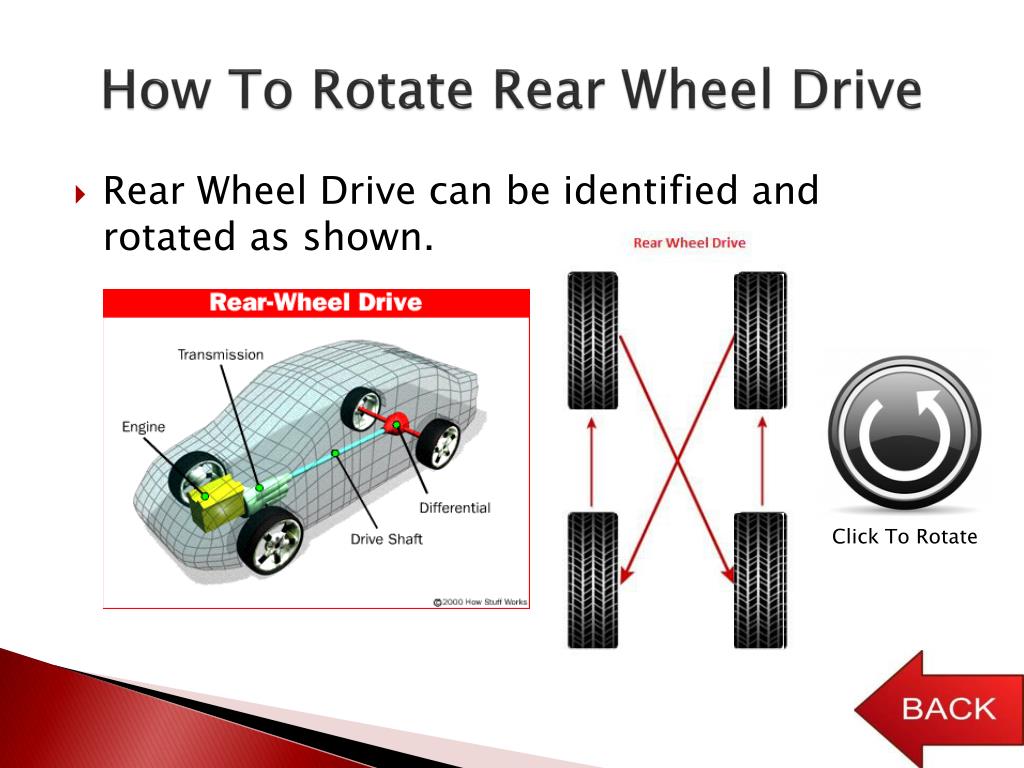 If the tire deflated during storage, look for the reason - the air does not just leave. Under the weight of the car, the air leakage will only intensify, and the next morning after "changing shoes" you will have a flat tire waiting for you if you do not fix it in advance.
If the tire deflated during storage, look for the reason - the air does not just leave. Under the weight of the car, the air leakage will only intensify, and the next morning after "changing shoes" you will have a flat tire waiting for you if you do not fix it in advance.
Do not forget that the pressure in tires of different sizes may differ - do not inflate the old one, getting used to it in six months. Look for recommended pressures for different tire sizes on a sticker in the doorway.
Read more: Tire pressure. How and why to measure it
Do not forget about the importance of wheel balancing: it ensures uniform rotation, the absence of vibrations on the steering wheel and body, and also saves the life of wheel bearings. Balancing is needed for each wheel of the car, including the spare one, in case of emergency installation on the road, as well as for planned tire rotation.
Even if you use two sets of wheels on different rims, check the balance of each set before installing.